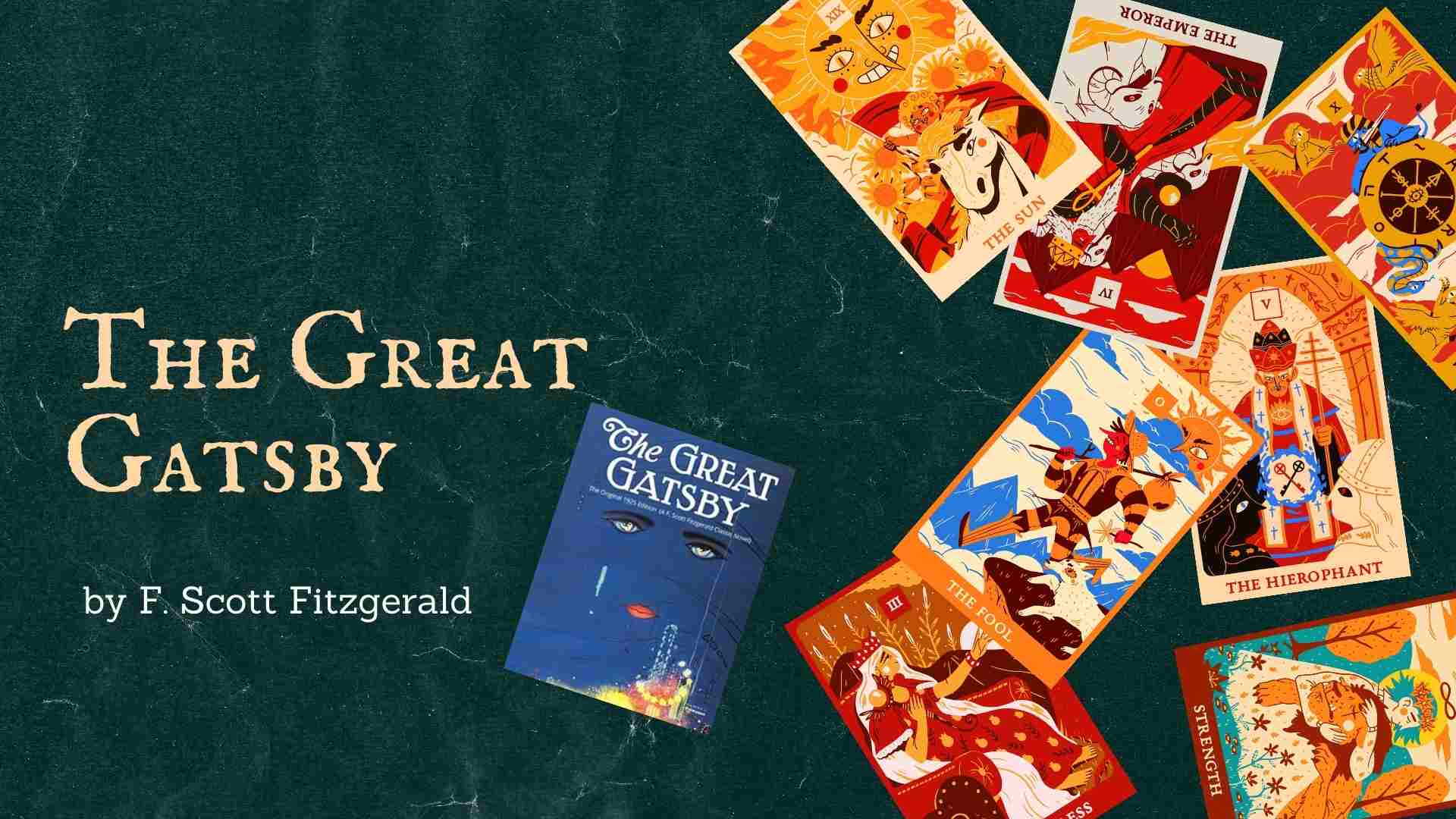“The Great Gatsby” is a classic American novel written by F. Scott Fitzgerald and published in 1925. Set against the backdrop of the Roaring Twenties, the story unfolds in the summer of 1922 and is narrated by Nick Carraway, a young man from Minnesota who moves to New York to work in the bond business.

The novel is primarily centered around the enigmatic and wealthy Jay Gatsby, whose extravagant parties at his opulent mansion on Long Island draw the attention and curiosity of the entire region. Gatsby is known for his wealth, but his origins and the source of his fortune remain shrouded in mystery. Throughout the narrative, Fitzgerald masterfully weaves together themes of love, wealth, excess, and the American Dream, creating a nuanced exploration of the Jazz Age society.
Nick Carraway, the novel’s narrator, becomes Gatsby’s neighbor and is drawn into the orbit of Gatsby’s lavish lifestyle. Nick is also Daisy Buchanan’s cousin, and this connection sets the stage for the unfolding complex relationships. Daisy, a beautiful and shallow woman, is married to Tom Buchanan, a wealthy and arrogant man. The Buchanans live in the East Egg, a community for the established elite, while Gatsby resides in the adjacent West Egg, symbolizing the new wealth of those who have recently achieved success.
As the narrative progresses, it becomes evident that Gatsby’s extravagant parties are attempts to attract Daisy, with whom he had a romantic history before World War I. Gatsby’s infatuation with Daisy has endured over the years, and he has amassed wealth in the hope of winning her back. Nick becomes a mediator between Gatsby and Daisy, facilitating their reunion.
The novel delves into the complexities of love and the pursuit of the American Dream. Gatsby, a self-made millionaire, embodies the ideal of success, yet his life is marked by loneliness and a perpetual yearning for something just out of reach. His mansion, with its extravagant parties, serves as a facade to conceal his true desires and the emptiness within.
Daisy, on the other hand, is trapped in a loveless marriage with Tom. Despite the opulence surrounding her, she is disillusioned and dissatisfied with her life. Gatsby represents to her a romanticized past, a time when she was in love and free from the constraints of societal expectations.
The character of Tom Buchanan plays a crucial role in the unfolding drama. He is domineering, aggressive, and exhibits a sense of entitlement. Tom’s affair with Myrtle Wilson, a working-class woman, further highlights the moral decay and hypocrisy within the upper echelons of society. The stark contrast between East Egg and West Egg underscores the divide between the old aristocracy and the newly rich, with both sides tainted by moral corruption.
The climax of the novel occurs when Gatsby’s dream of rekindling his romance with Daisy collides with reality. Tom exposes Gatsby’s mysterious past and unveils the source of his wealth, casting doubt on his legitimacy. Daisy, torn between Gatsby and Tom, ultimately chooses the security and familiarity of her marriage. Gatsby’s dream crumbles and he becomes a tragic figure whose relentless pursuit of the American Dream leads to his demise.
In the aftermath of Gatsby’s death, Nick reflects on the hollowness of the society he has witnessed. The novel concludes with a poignant meditation on the American Dream and the illusion of success. Fitzgerald’s prose captures the essence of the Jazz Age, portraying a society intoxicated by wealth and excess but ultimately devoid of genuine human connections.
“The Great Gatsby” remains a timeless exploration of the complexities of human nature, the allure of the American Dream, and the consequences of unchecked ambition. Fitzgerald’s vivid portrayal of the 1920s serves as both a critique of the society of his time and a cautionary tale that resonates across generations. The novel’s enduring legacy lies in its ability to provoke introspection about the pursuit of success, the nature of love, and the fragility of the American Dream.
We appreciate for reading the story from here😍Find out more stories on the page. if you really wanna get updated, You could also join us on Pinterest by clicking the link below.
- Pinterest: Click Here
- More Stories: Click Here
FAQs on The Great Gatsby by F. Scott Fitzgerald
What is “The Great Gatsby” about?
“The Great Gatsby” is a novel by F. Scott Fitzgerald that follows the story of Jay Gatsby, a wealthy and mysterious man, and his love for Daisy Buchanan, a married woman.
When was “The Great Gatsby” first published?
“The Great Gatsby” was first published in 1925.
Who are the main characters in “The Great Gatsby”?
The main characters in “The Great Gatsby” include Jay Gatsby, Daisy Buchanan, Tom Buchanan, Nick Carraway, and Jordan Baker.
What is the significance of the green light in “The Great Gatsby”?
The green light, located at the end of Daisy Buchanan’s dock, symbolizes Gatsby’s hopes and dreams, particularly his longing for a future with Daisy.

